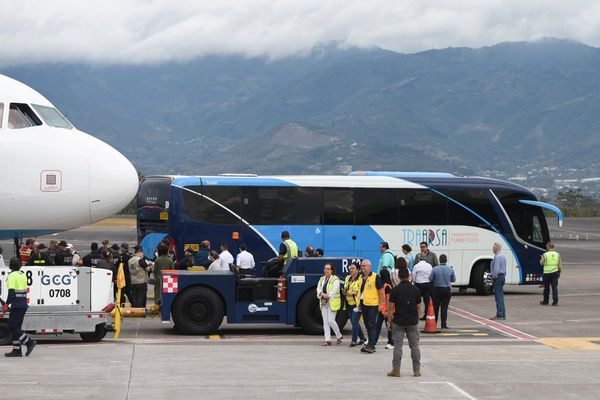
Quaint coastal villages, snow-capped mountain peaks and verdant valleys – this is Cantabria. One of Spain’s smallest regions, Cantabria lies sandwiched up against the country’s wild north coast, in an area known as “green Spain”. One of the best ways to experience it is through the delicious food, seeking out local specialities and connecting with the people through age-old culinary traditions, while exploring some of its best destinations. From Santander to Santoña, here are some beautiful places to enjoy the best authentic Cantabrian cuisine.
Santander for cocido montañés
Most trips to Cantabria begin and end in the capital – the port city of Santander, a big ferry hub. Hemmed in by its historic fishing port on one side and vast white beaches on the other, it’s known for its numerous palatial style buildings and spectacular setting.
Almost every region of Spain has its own signature stew, also known as a platos de cuchara (dish you eat with a spoon), and in Cantabria it’s cocido montañés. This hearty concoction is made from white beans and vegetables mixed with chorizo, black pudding, pork ribs and pancetta, spiced with paprika and a dash of olive oil.
From Santander you can head east, west, or south, depending on what you want to explore (and eat), whether it’s charming seaside villages, national parks filled with dramatic summits, or lush valleys hiding ancient history. Bring your car on the ferry for ease of travel and flexibility, but buses also run throughout Cantabria for those travelling without a car.
San Vicente de la Barquera for sorropotún
West of Santander lies the small village of San Vicente de la Barquera, the best place to sample Cantabria’s famed fish broth – sorropotún. Family recipes have passed down through the generations among the locals here, but traditionally it features chunks of tuna and potatoes in a tomato soup flavoured with paprika, parsley and garlic. Stop en route at Santillana del Mar, an attractive medieval, cobbled town filled with Renaissance and baroque architecture and best known for its grand 12th-century Colegiata de Santa Juliana. Look out for sobaos in the local bakeries here, light and fluffy sponge cakes, flavoured with lemon zest and sometimes anise liquor or rum.
A 15-minute drive from San Vicente de la Barquera lies the small town of Comillas – named the capital of Spain for one day in 1881 and the first place in the country to have electric streetlamps. Today, its main claim to fame is El Capricho de Gaudí, a fanciful, colourfully-tiled villa designed by Antoni Gaudí.
Potes for cocido lebaniego
Continue your exploration of Cantabria’s cuisine in the historic area of Liébana (less than two hours from Santander) and the town of Potes, located right on the edge of the mighty Picos de Europa national park. This medieval town is known for cocido lebaniego – a type of stew found throughout the mountains of Picos de Europa. It’s similar to the cocido montañés, but made with chickpeas and cabbage, as well as chorizo, bacon and ham, and served with bone marrow broth. Make sure to try some local cheeses here such as Quesucos de Liebana, a slightly smoky and buttery cheese made from cows’ milk, sometimes combined with goat or sheep milk too. Follow it up with a hike through the nearby mountainous landscapes.
Santoña for anchovies
Travel east from Santander and you’ll find yourself at the coastal village of Santoña – renowned for its delicious plump anchovies and known as the anchovy capital of Spain. Anchoas de Santoña are considered first-rate because of the way they’re specially prepared – cured in salt for a minimum of 12 months before being filleted by hand by local women known as “sobadoras” and then preserved in high-quality olive oil. They are often eaten with toasted bread, olives or roasted peppers, then washed down with a glass of local wine. After you’ve had your fill, take a hike out along the route of the Faro del Caballo lighthouse or relax on Playa de Berria beach.
Laredo for rabas
Just 20 minutes along the coast from Santoña, you’ll find yourself in Laredo with its vast four-mile sweep of sand – Playa La Salvé beach. This is an ideal spot to try rabas, another Cantabrian speciality. These tender strips of squid tentacles are coated in flour and fried, and can be found throughout the region, but are best eaten with a sea view and a squeeze of lemon. Drinks to enjoy here include local tart sidra (cider) and orujo, a brandy made from pressed and distilled grapes.
Valles Pasiegos for quesada pasiega
South of Santander lies the Valles Pasiegos, which is made up of three valleys, Pas, Miera and Pisueña. This is where you’ll find one of the best desserts that Cantabria has to offer – quesada pasiega. It’s a dense type of pudding you can cut like a cheesecake and is made from fresh cheese or leche cuajada (milk curds) mixed with eggs, sugar and flour and a touch of lemon. Apart from its dessert, the valleys are known for their natural cave systems, which are filled with Palaeolithic art. Some are Unesco world heritage sites and date back to between 30,000 and 10,000 BC. Cueva de El Castillo and Las Monedas are both open for tours.
Brittany Ferries provides a fun and easy way to reach Cantabria from the UK, enabling you to experience the culinary delights and discover the region. It runs up to two departures a week from Plymouth and Portsmouth to Santander aboard its ferries for both passengers travelling by car and on foot. Crossings take one night from Plymouth and two nights from Portsmouth, meaning your trip will begin with a mini cruise through the Bay of Biscay and the Cantabrian Sea.
To find out more about Cantabrian cuisine, visit brittany-ferries.co.uk







